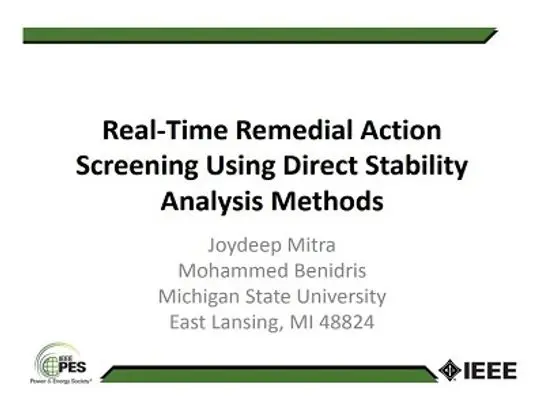-
Members: FreePES
IEEE Members: $10.00
Non-members: $20.00Pages/Slides: 98
01 Aug 2014
When will the next unforeseen disturbance occur in your power system? Could it cause a cascading out- age? What will be the initial state of the power system when the next unanticipated disturbance occurs? Consider the real-time operations environment, which has become substantially more complex, dynamic, and uncertain, as new market rules, regulatory policies, and technologies have been adopted. Now, sup- pose we could predict 30 seconds of power system dynamic response, with a certain level of confidence, within 15 seconds of the initial unforeseen disturbance. Is it possible? Shifting operational data analytics from a traditionally offline environment to real-time situational awareness, eventually supporting measure- ment-based, wide-area, fast control, will require significant advancements in algorithms and computation- al approaches. This panel session will present ongoing research in mathematics, modeling and compu- tational techniques for ?faster than real-time? dynamics simulation of power systems.
Chairs:
A. Flueck, Illinois Institute of Technology
Primary Committee:
(PSACE) Computer Analytical Methods


